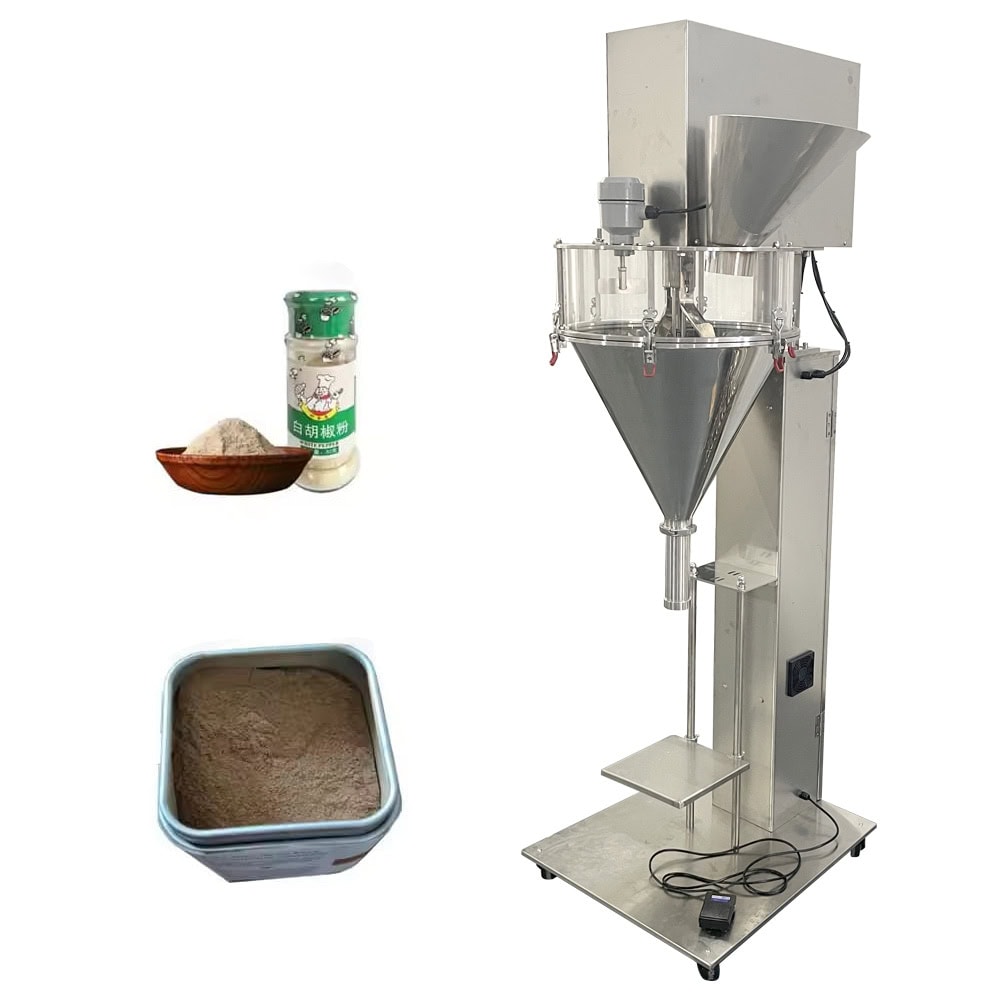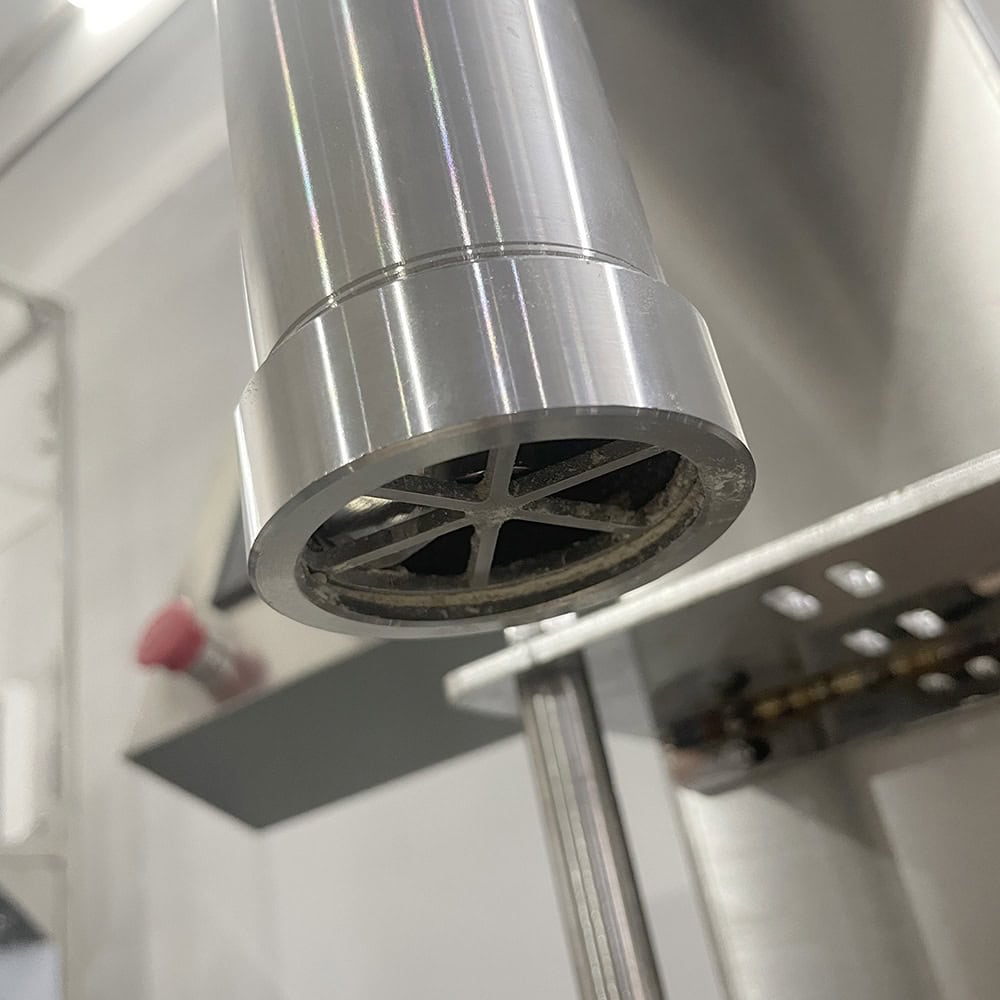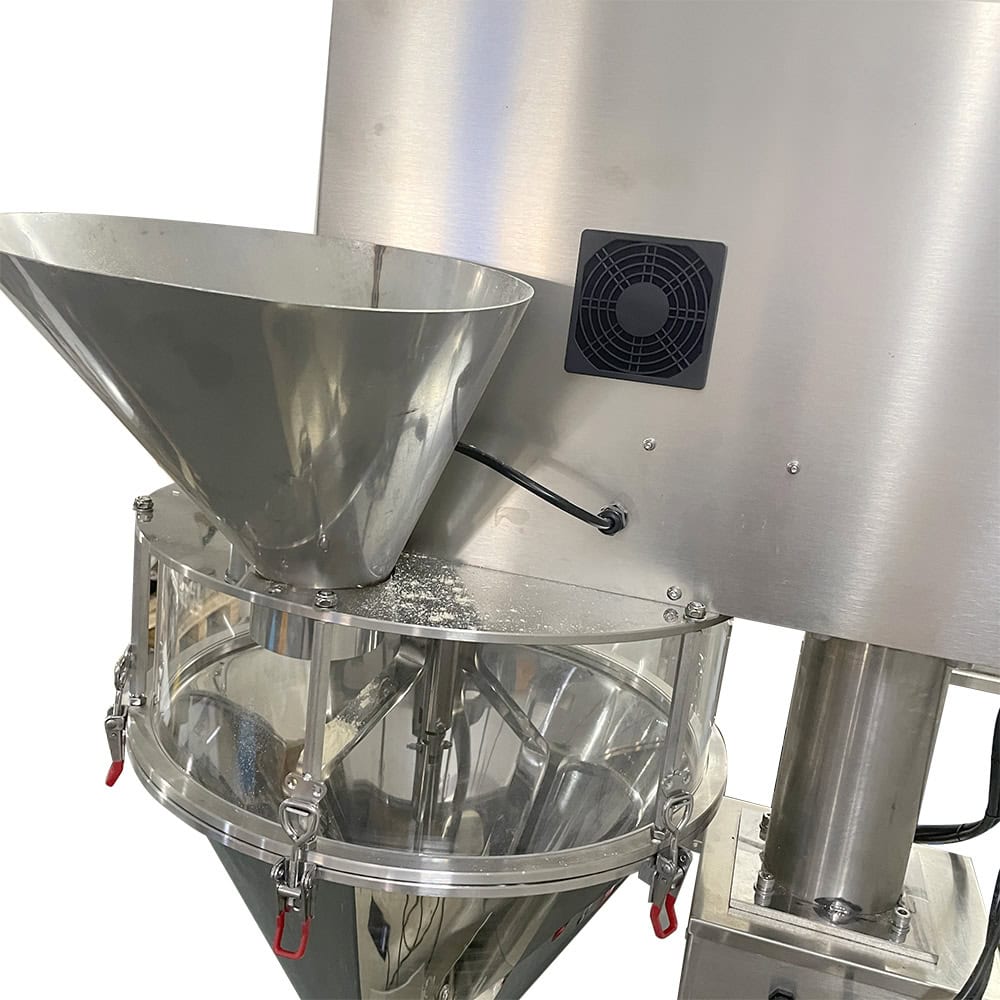The inefficient powder filling process can result in product waste, inconsistency, and production delays. This impacts operational efficiency and costs. The remedy is to use automated powder filling machines. These machines provide accurate, high-speed, consistent powder filling.
Powder filling machines automate the process of putting dry powder into containers using methods like auger filling, vacuum filling, and volumetric filling. These machines provide exact amounts of fill, operate at high speeds, and eliminate human errors.
Now, let’s look at how these machines work and the benefits of using them.

Working Principle of Powder Filling Machines
Powder filling machines automate the process of putting dry powder into containers and provide control over the amount of powder you put in the container. There are different ways to do this, including auger filling, vacuum filling, and volumetric filling.
- Auger Filling: This method uses a screw that turns and moves the powder from left to right, dispensing it into containers. The speed and rotation of the auger control how much powder is dispensed, making it highly accurate for both free-flowing and non-free-flowing powders.
- Vacuum Filling: In this method, you suck the air out of the container before you put the powder in. This allows the powder to be tightly packed in the container. This is perfect for powders that are very fine and tend to “dust” the area. The vacuum allows you to fill the container with powder without making a mess.
- Volumetric Filling: This method measures the volume of the powder to make sure each container gets the right amount. This is a simple and cost-effective way to fill containers with powder. It works well with powders that flow easily into predetermined spaces before they go into the container.
Key Components of Powder Filling Machines
Powder filling machines consist of several key components that work together to ensure accurate filling and efficient operation.
- Hopper: The hopper stores the bulk powder before dispensing it. It features sensors to monitor the powder level, ensuring continuous operation without interruptions. The hopper’s design also prevents powder buildup and ensures smooth feeding into the filling mechanism.
- Filling Head: The filling head determines how the powder is dispensed. In auger systems, this is where the auger rotates to release powder; in vacuum systems, it seals the container before filling. It is critical for maintaining consistency in filling operations.
- Weighing System: Advanced machines often integrate weighing systems that ensure each container receives the exact amount of powder. This system is crucial for consistency and quality control, preventing overfilling or underfilling.
- PLC Control System: Most machines are equipped with a Programmable Logic Controller (PLC) that automates the process, controlling the speed, timing, and amount of powder dispensed. The PLC ensures smooth operation by monitoring every step of the process.

Step-by-Step Powder Filling Process
The powder filling process involves several steps that ensure efficiency and precision:
- Filling Preparation: The machine is calibrated based on the desired quantity of powder to be filled. Containers are aligned, and the hopper is filled with powder to start the process. This ensures that the machine is ready for operation without any delays.
- Filling Operation: The filling head releases the powder into the containers either through an auger, vacuum, or volumetric system. Sensors ensure the correct amount of powder is dispensed in each container, avoiding wastage and ensuring product uniformity.
- Sealing and Capping: Once filled, containers are sealed or capped to prevent contamination. In automated systems, this process happens in quick succession, maintaining a high production rate.
- Quality Control: High-end machines often feature built-in quality checks, such as weighing each filled container to ensure consistency. Containers that do not meet the weight requirement are automatically rejected, ensuring only accurate products move forward.
Types of Powder Filling Machines
There are different types of powder filling machines, each suited to various industries and production requirements.
- Semi-Automatic Powder Filling Machines: These machines require manual intervention for loading containers, making them suitable for small to medium-scale production. They offer flexibility and control but may require additional labor costs.
- Fully Automatic Powder Filling Machines: Ideal for large-scale production, these machines automate the entire process, from loading containers to sealing and labeling. They are designed for continuous operation and minimal human intervention, increasing productivity and reducing labor costs.
- Multi-Head Powder Filling Machines: These machines feature multiple filling heads, allowing them to fill several containers simultaneously, which boosts production speed. This type of machine is often used in industries requiring high throughput and consistency.

Advantages of Powder Filling Machines
Powder filling machines offer a wide range of benefits that improve the efficiency and quality of production lines.
- Precision and Accuracy: The automated system ensures each container receives the correct amount of powder, reducing wastage and ensuring product consistency. This is particularly important for industries where precise measurements are critical, such as pharmaceuticals or food production.
- Speed and Efficiency: Automated machines can operate at high speeds, filling multiple containers per minute, which increases overall production output. This allows businesses to meet higher demand without sacrificing quality.
- Reduced Labor Costs: By automating the filling process, these machines minimize the need for manual labor, which reduces operational costs and the risk of human error. This also improves safety in the workplace by reducing the need for manual handling of powders.
Applications of Powder Filling Machines
Powder filling machines are used in a variety of industries where accurate powder dispensing is critical.
- Pharmaceutical Industry: Powder filling machines are essential for filling medicines in powdered form into bottles or sachets. Precision is crucial to ensure proper dosage, and the machines are designed to meet the high regulatory standards required in the pharmaceutical industry.
- Food Industry: In food processing, powder filling machines are used for packaging powdered ingredients like flour, spices, and protein powders into bags or containers. These machines ensure food safety and consistency, which are vital in the food industry.
- Chemical Industry: Powders such as detergents or fertilizers are packaged using these machines, ensuring accurate weight and preventing contamination. The machines used in the chemical industry often include features to handle hazardous or reactive materials safely.
Conclusion
Powder filling machines automate the process of putting dry powder into containers with great precision. These machines are used in industries like pharmaceuticals, food, and chemicals to increase production efficiency, accuracy, and product consistency while reducing labor costs.









